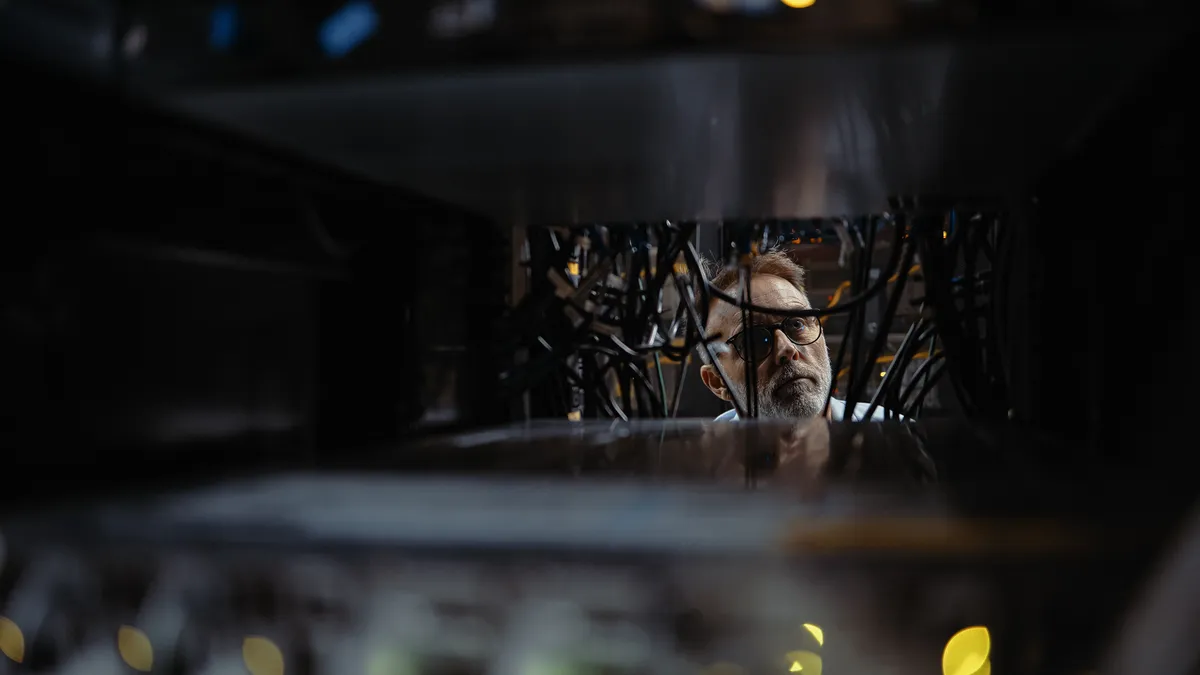Editor's note: The following is a guest article from Sathish PV, Practice Head – RPA at Happiest Minds Technologies.
The automation technology market is anticipated to bring the second largest economic revolution after mobile internet and smartphones. According to a survey done by McKinsey, automation technology has the potential to impact the economy by $6.7 trillion by 2025, which explains the rush that businesses are in to implement Robotic Process Automation (RPA).
Large enterprises have attempted to install armies of bots in their IT ecosystem while the small and medium scale enterprises started pilot projects to test RPA capabilities. Processes that were rule based, reputable, of high volume, relying on multiple systems and had high risk factors were suitable candidates for RPA transitions.
Achieving success in these attempted prototypes has created confident use cases for RPA, inspiring buyers to invest. Buoyed by enthusiasm for RPA, the industry has also witnessed a mushrooming of automation tools and platform vendors that provide different automation capabilities, therefore pushing the adoption rate further.
Combined with all the media attention and growing expertise and skills, the automation industry is moving at a rapid pace, and is only going to get bigger and better, moving from just a tactical technology to becoming an overall digitization strategy.
However, in the cacophony to participate in the automation "gold rush," it is very easy to overlook and forget to build a foolproof strategy before the adoption of RPA.
To establish RPA as a strategic tool, it has to mature from just being a dumb rule-based automation tool to something more intelligent that can replace humans for most of the transactional work. This could also reduce the cost of production by as much as 60%.
What RPA can do
An RPA system currently can imitate the rule-based jobs that humans interface with at the "presentation layer." A single process could be automated within two to three weeks, delivering value thereafter. The "robot" can then continue processing that activity 24/7/365 days a year if required, with every action being completely traceable.
For example, if a law firm is managing a property portfolio on behalf of a client, they would be expected to carry out land registry checks at some point. This is commonly a paralegal role that might involve the person getting a request from a lawyer, or from the client directly, probably via a template, an email or a workflow system.
The person would read the relevant information from the form, log into the land registry site, enter the information into the site and read the results that came back from the search. They would then enter information in the form and respond to the request.
Now, this whole process can be done by RPA without any human intervention. RPA in the above example demonstrates some of major benefits:
- The cost of the robot is a fraction of that of the human.
- The robot will work 24/7 every day every year unlike humans.
- No need for IT or process changes as the robot will carry out tasks as the human does.
- The robot once trained will process the same way without deviation at all times.
- Unlike humans, robots do not have a time constraints.
Are there any limitations?
While the benefits provide plenty of opportunities for RPA in businesses of all sizes, they come with their own limitations. Although RPA manages processes intuitively, the robots are "dumb;" they do exactly as trained, with unwavering compliance.
It is a delight to have a trained assistant, however there will always be situations which will be uncertain, either with the format of the incoming information, or when decision making needs to be done. Hence the need for cognitive intelligence arises.
One of the biggest constraints of RPA is that it needs structured data in the form of a spreadsheet, a web form or a database for the robots to work flawlessly. Cognitive intelligence combined with machine learning builds this ability in RPA where it can deal with the unstructured, or semi-structured data and transform it into a structured form, which can then be processed by the robots.
For example, in the invoices or any logistic pieces of advice, the data is the same, but the format may vary in different forms, making the information a semi-structured data.
Now if a robot is given this unstructured data to work with, it might stop abruptly. With the intelligence machine learning, users can extract the meta-data from the page or the form and enter it into the system of record. Once entered, robots can use the data for subsequent processing.
The robots can even use the AI output as a trigger for them to run. For example, a legal contract is a semi-structured document (it has some standard information such as the name of parties, termination date, limits of liability, etc.). The AI search capability will extract the meta-data for all of a business’s contracts so that they can manage their entire risk portfolio.
RPA robots can also be triggered in case there was a change in regulation and all contracts of a specific type that need updating.
RPA fails when it comes to decision making in a process. For instance, in the process of loan application, the initial stage of information submission into the CRM system can be automated through RPA. After the submission of the data, decision making for the approval or non-approval of the loan needs to be done.
If the decision is relatively simple, it can still be handled by RPA. However, complex decisions need the intelligence of cognitive techniques. Hence the combination of RPA and cognitive intelligence will allow users to do end to end automation for many processes, and achieve greater efficiency benefits as compared to the partially automated ones.
So why RPA?
The industry is looking at an age of automation coming up and RPA will be paving the path of evolution from rule-based automation to intelligent cognitive automation.
In particular, the industry has witnessed a RPA revolution through AI, IT automation and customer services
RPA in AI
RPA can be a big contributor to AI automation efforts. Robots are very good at extracting and collating data from different sources. Therefore, RPA can be used as a data supplier for AI systems. Tasks like manipulation of the data (e.g. remapping fields) and identifying any unusable, or dirty, data can also be handled by RPA.
Companies that have implemented a combination of RPA and AI solutions have seen, for example, 58% of incidents being resolved without any human intervention, and a 70% reduction in the meantime to resolution, which proves that RPA provides is a useful complementary technology.
In addition to AI enabling more processes to be automated, RPA also aids the data collation efforts that AI often needs. The two technologies also work well together when there are larger digital transformational objectives in mind.
RPA for IT automation
RPA can autonomously work on infrastructure components, triggered by system alerts. For IT automation, cognitive intelligence can enhance the capabilities of RPA.
By using optimization and prediction capabilities they can be trained from run-books and other sources, and will continue to learn from ‘watching’ human engineers.
The cognitive intelligent systems can also be used to proactively monitor the IT environment and its current state in order to identify trends as well as any changes to the environment (a new virtual server, for example) and then adjust plans accordingly.
RPA in customer service
Enabling a self-service capability in a business can be a good way to improve customer service and reduce costs at the same time. This can be achieved through a combination of cognitive intelligent systems managing the front-end customer engagement (e.g. through chatbots) and RPA managing the back-end processes



















